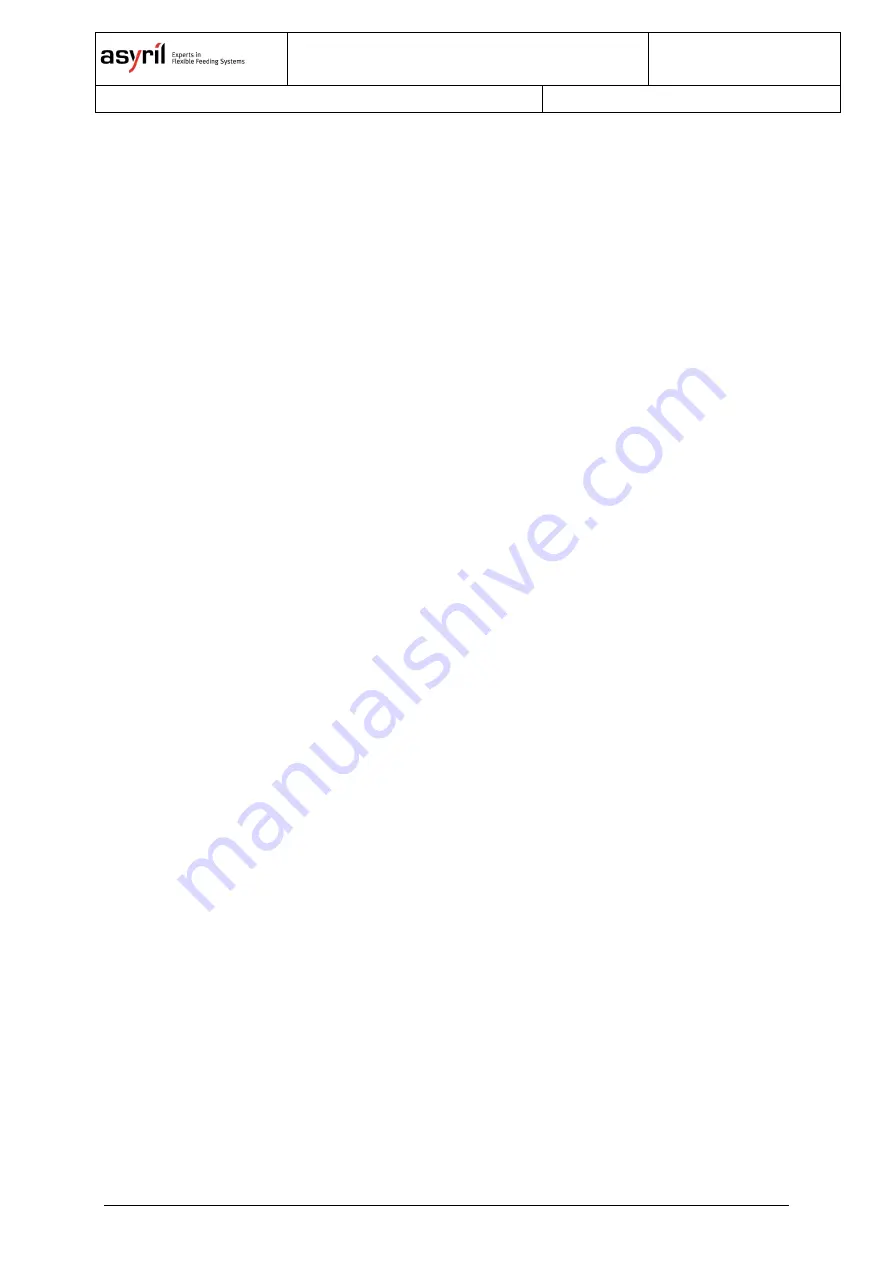
©
Copyright Asyril S.A.
Annex I : Asycube platform use overview
Version: A2
47/50
10. Annex I : Asycube platform use overview
This section gives a brief overview about the different concepts introduced by the Asycube
platform and about the HMI software functionalities to use it.
10.1. Glossary
Actuator:
hardware component generating a vibration, according to 4 parameters at the
software level: amplitude, frequency, phase and shape. The number of actuators varies
relatively to the Asycube type.
Vibration:
a vibration is defined by the activation of the platform actuators. At the software
level, it is defined by the following set of parameters: (actuator number) * (4 actuator
parameters) + (1 duration).
Vibration set:
set of 26 platform vibrations identified by the letters A to Z, and 26 additional
hopper vibrations for the Asycubes 50 and 80 or 26 outputs activations for the Asycubes 240
and 530, identified as well by the letters A to Z. There are 26 different vibration sets on the
platform (the 26
th
is the reference set and is read-only).
Recipe:
One vibration set is linked to one set of behaviors (vibrations and sequences) or kind
of parts on the Asycube platform. Vibration & sequences are specific to one vibration set, and
one specific vibration set can be used by several vibrations and sequences. That is why one
vibration set refer generally to one kind of products, implementing different platform vibrations
and sequences. This set of behaviors related to one vibration set is called a recipe.
Standard vibration:
relatively to a selected vibration set, the first 11 vibrations (A to I for the
Asycube 50 and 80, and from A to K for the Asycube 240 and 530) are by convention used
for standard vibrations (forward, backward, left, right, flip, long axis centering, etc.).
Smart vibration:
a smart vibration is based on the input of a vision system for the Asycube
to adapt to the current situation. In addition of the input of a vision system, it uses the
parameters tuned in the vibration set. This, its effectiveness depends strongly on well-
adjusted vibrations. There are 2 types of smart vibrations:
•
Vibration type Smart Centering:
This vibration type is used to center parts on the
platform. It computes based on the detected position of the parts (center of mass) the
direction and duration of the vibration.
•
Vibration type Smart Feeding:
This vibration type is used optimally to feed parts on
the platform from a hopper, embedded in the platform or not. This vibration type
takes into account a duration mode called
quantity adjusted
. This duration mode is
used to adapt the feeding duration of new parts onto the picking surface based on
the number of parts detected on the surface.


















